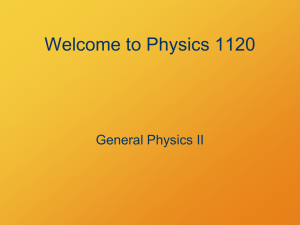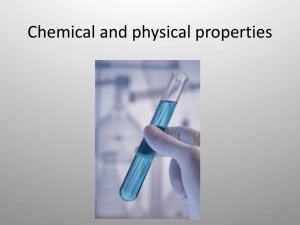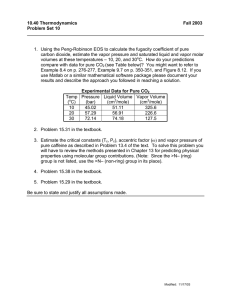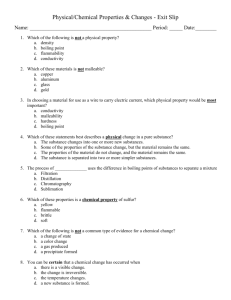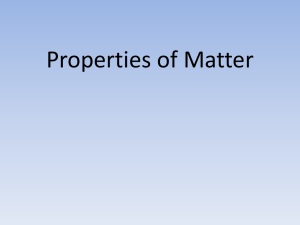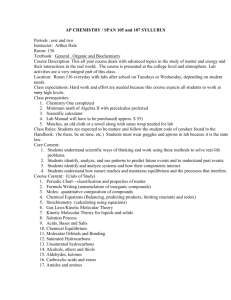Properties of Pure Substances: Chemistry Presentation
advertisement
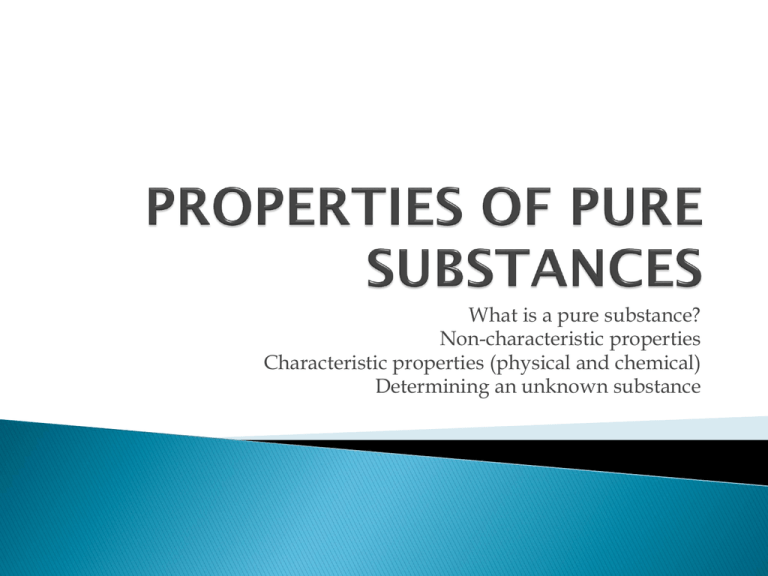
What is a pure substance? Non-characteristic properties Characteristic properties (physical and chemical) Determining an unknown substance Substance made up of 1 type of atom OR 1 type of molecule Mixtures are NOT pure substance 2 types ◦ Elements 1 type of atom Iron, oxygen, ◦ Compounds At least 2 types of atoms Water, salt, A property that is shared by many substances It does not allow you to identify it Examples: mass, volume, temperature, color, shape. A property that is unique to that one substance Allows you to identify it right away Examples: DNA, boiling point, density Once the observation of the property is made, the molecular make-up of the substance remains the same Examples: melting point, boiling point, density, solubility See Table 1.30 on page 23 of textbook Once the action or observation is made, the substance is no longer the same, its molecular make-up has changed Examples: burning, digesting, use of indicators See Table 1.31 on page 24 of textbook There are many tests that can be done to identify a substance which include: ◦ Conductivity: if light of conductivity meter comes on ◦ Malleability: ability to bend ◦ Magnetism: substance is attracted or repelled by a magnet ◦ Smell ◦ Colour ◦ Metallic luster: shine, all metals shine ◦ Density ◦ See tables on pages 23 and 24 of textbook
